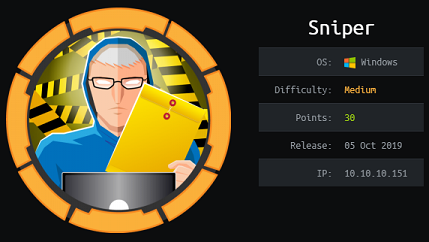Traverxec - Hack The Box

 Sometimes you need a break from the hard boxes that take forever to pwn. Traverxec is an easy box that start with a custom vulnerable webserver with an unauthenticated RCE that we exploit to land an initial shell. After pivoting to another user by finding his SSH private key and cracking it, we get root through the less pager invoked by journalctl running as root through sudo.
Sometimes you need a break from the hard boxes that take forever to pwn. Traverxec is an easy box that start with a custom vulnerable webserver with an unauthenticated RCE that we exploit to land an initial shell. After pivoting to another user by finding his SSH private key and cracking it, we get root through the less pager invoked by journalctl running as root through sudo.
 This writeup is outdated and the attack path presented for user bolt has been patched. Initially once we pivoted from the bolt user to www-data we could run restic as root and abuse the sftp.command parameter to execute any command as root.
This writeup is outdated and the attack path presented for user bolt has been patched. Initially once we pivoted from the bolt user to www-data we could run restic as root and abuse the sftp.command parameter to execute any command as root.
 Sniper is another box I got access to through an unintended method. The PHP application wasn’t supposed to be exploitable through Remote File Inclusion but because it runs on Windows, we can use UNC path to include a file from an SMB share. Once I had a shell, I pivoted using plink and logged in as user Chris with WinRM. The box author was nice enough to leave hints as to what kind of malicious payload was expected and I used Nishang to generate a CHM payload and get Administrator access.
Sniper is another box I got access to through an unintended method. The PHP application wasn’t supposed to be exploitable through Remote File Inclusion but because it runs on Windows, we can use UNC path to include a file from an SMB share. Once I had a shell, I pivoted using plink and logged in as user Chris with WinRM. The box author was nice enough to leave hints as to what kind of malicious payload was expected and I used Nishang to generate a CHM payload and get Administrator access.
 Forest is a nice easy box that go over two Active Directory misconfigurations / vulnerabilities: Kerberos Pre-Authentication (disabled) and ACLs misconfiguration. After I retrieve and cracked the hash for the service account I used aclpwn to automate the attack path and give myself DCsync rights to the domain.
Forest is a nice easy box that go over two Active Directory misconfigurations / vulnerabilities: Kerberos Pre-Authentication (disabled) and ACLs misconfiguration. After I retrieve and cracked the hash for the service account I used aclpwn to automate the attack path and give myself DCsync rights to the domain.
 Postman was a somewhat frustrating box because we had to find the correct user directory where to write our SSH key using the unprotected Redis instance. I expected to be able to use a wordlist to scan through /home and find a valid user but on this box the redis user was configured with a valid login shell so I had to guess that and write my SSH key to /var/lib/redis/.ssh instead. The rest of the box was pretty straightforward, crack some SSH private key then pop a root shell with a Webmin CVE.
Postman was a somewhat frustrating box because we had to find the correct user directory where to write our SSH key using the unprotected Redis instance. I expected to be able to use a wordlist to scan through /home and find a valid user but on this box the redis user was configured with a valid login shell so I had to guess that and write my SSH key to /var/lib/redis/.ssh instead. The rest of the box was pretty straightforward, crack some SSH private key then pop a root shell with a Webmin CVE.
 Bankrobber is a web app box with a simple XSS and SQL injection that we have to exploit in order to get the source code of the application and discover a command injection vulnerability in the backdoor checker page that’s only reachable from localhost. By using the XSS to make a local request to that page, we can get land a shell on the box. To get root, we exploit a buffer in an application to override the name of the binary launched by the program.
Bankrobber is a web app box with a simple XSS and SQL injection that we have to exploit in order to get the source code of the application and discover a command injection vulnerability in the backdoor checker page that’s only reachable from localhost. By using the XSS to make a local request to that page, we can get land a shell on the box. To get root, we exploit a buffer in an application to override the name of the binary launched by the program.
 Zetta is another amazing box by jkr. The first part was kinda tricky because you had to pay attention to the details on the webpage and spot the references to IPv6 that lead you to the EPTR command to disclose the IPv6 address of the server. Then there’s some light bruteforcing of rsync’s credentials with a custom bruteforce script and finally a really cool SQL injection in a syslog PostgreSQL module.
Zetta is another amazing box by jkr. The first part was kinda tricky because you had to pay attention to the details on the webpage and spot the references to IPv6 that lead you to the EPTR command to disclose the IPv6 address of the server. Then there’s some light bruteforcing of rsync’s credentials with a custom bruteforce script and finally a really cool SQL injection in a syslog PostgreSQL module.
 To get remote code execution on JSON, I exploited a deserialization vulnerability in the web application using the Json.net formatter. After getting a shell I could either get a quick SYSTEM shell by abusing SeImpersonatePrivileges with Juicy Potato or reverse the Sync2FTP application to decrypt its configuration and find the superadmin user credentials.
To get remote code execution on JSON, I exploited a deserialization vulnerability in the web application using the Json.net formatter. After getting a shell I could either get a quick SYSTEM shell by abusing SeImpersonatePrivileges with Juicy Potato or reverse the Sync2FTP application to decrypt its configuration and find the superadmin user credentials.
 I had fun solving RE but I did it using an unintended path. After getting a shell with a macroed .ods file, I saw that the Winrar version had a CVE which allowed me to drop a webshell in the webserver path and get RCE as iis apppool\re. The user had access to modify the UsoSvc service running with SYSTEM privileges so it was trivial at that point to get a SYSTEM shell. Because the root flag was encrypted for user Coby, I used meterpreter to impersonate his token and read the file.
I had fun solving RE but I did it using an unintended path. After getting a shell with a macroed .ods file, I saw that the Winrar version had a CVE which allowed me to drop a webshell in the webserver path and get RCE as iis apppool\re. The user had access to modify the UsoSvc service running with SYSTEM privileges so it was trivial at that point to get a SYSTEM shell. Because the root flag was encrypted for user Coby, I used meterpreter to impersonate his token and read the file.
 During the holidays, @stackfault (sysop from the BottomlessAbyss BBS) ran a month long CTF with challenges being released every couple of days. Some of challenges were unsolved or partially solved challenges from earlier HackFest editions as well as some new ones. There was also a point depreciation system in place so challenges solved earlier gave more points. This post is a writeup for the Evilconneck challenge, a quick but fun challenge with websockets and a bit of crypto.
During the holidays, @stackfault (sysop from the BottomlessAbyss BBS) ran a month long CTF with challenges being released every couple of days. Some of challenges were unsolved or partially solved challenges from earlier HackFest editions as well as some new ones. There was also a point depreciation system in place so challenges solved earlier gave more points. This post is a writeup for the Evilconneck challenge, a quick but fun challenge with websockets and a bit of crypto.